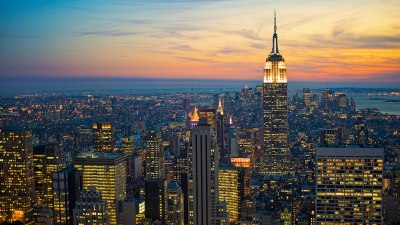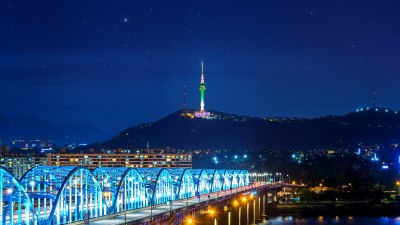Why Your Boarding Gate Is Always the Farthest One Away
Explore common reasons why boarding gates are often located far from the main terminal at airports.

Have you ever noticed that your boarding gate is often the farthest one away? It's a common complaint among travelers, especially at large airports. While it may feel like a cruel joke played by airport planners, there are several practical reasons behind this phenomenon. Understanding these reasons can not only ease your frustration but also enhance your travel experience. In this article, we’ll delve into the various factors that contribute to the location of boarding gates, and how airports design these spaces to accommodate the large volume of travelers each day.
The Purpose of Airport Design
Airports are typically designed with several key objectives in mind: efficiency, safety, and passenger comfort. The layout of an airport is not arbitrary; it is carefully crafted to facilitate the smooth flow of large numbers of passengers and planes. Factors such as space availability, the number of incoming and outgoing flights, and the overall size of the airport contribute to the strategic placement of boarding gates. Airports often have multiple terminals, with each one serving different airlines or types of flights. This distribution can lead to gates being spread out, especially in larger airports where the distance between terminals can be significant.
Terminal Capacity and Passenger Flow
Another reason for the seemingly distant boarding gates is the capacity of the terminal itself. Airports must manage large volumes of passengers, and sometimes the terminals simply cannot accommodate all the boarding gates in close proximity. This results in gates being placed at various distances depending on the space available and the volume of passenger traffic for each gate. Furthermore, design considerations must include security checkpoints, check-in areas, and baggage claim, which can all affect how boarding areas are laid out. As such, airports often prioritize the capability to handle peak travel times and large passenger loads over convenience.
Runway and Taxiway Layouts
The positioning of boarding gates is also influenced by the layout of runways and taxiways. Airports must comply with strict regulations regarding the distance between gates, runways, and taxiing aircraft. This is to ensure safety in operations and to minimize the risk of accidents. When designing an airport, planners must take into account how aircraft will maneuver between gates and runways. Therefore, when constructing a new terminal, it’s not unusual for gates to be located farther away to maintain safe distances from active runways and taxiways.
Airline Hub Operations
Many smaller airports operate as regional hubs for major airlines, while larger international airports serve various airlines and global routes. Airlines tend to cluster their gates to facilitate quicker connections for passengers on different flights. If an airport is a hub for a specific airline, you may find a concentration of that airline's gates, which could be located at the far end of the terminal. This design is intentional; it allows for an organized and systematic operation for the carrier while potentially leading to longer walks for passengers arriving on other airlines.
The Role of Airport Expansion
As air travel has increased in popularity, many airports have undergone significant expansions. New terminals are often added to accommodate the growing number of travelers, and these expansions may not always be right next to the existing facilities. This can lead to a scenario where new gates are added at the farthest terminal from the main concourse. The process of retrofitting older terminals to accommodate a new airport design can be challenging and costly, resulting in a less logical layout for boarding gates. As airports expand, they must also consider future growth, leading to decisions that may place gates farther away from the central areas.
Passenger Experience and Amenities
Airports are increasingly focusing on improving passenger experience, which includes providing amenities such as shops, restaurants, and lounges. Some airports intentionally create a longer walking distance to encourage travelers to shop or dine along the way. When boarding gates are placed farther down the terminal, it invites passengers to explore the amenities and services the airport offers. While this may add extra distance, it helps create a more engaging travel experience. After all, the airport is often the first impression of a destination, and a well-designed space can enhance that experience.
Health and Safety Regulations
Especially in the wake of the COVID-19 pandemic, health and safety have become paramount in airport design and layout. Airports are now considering social distancing measures in their designs as part of their boarding and gate layout. This can lead to gates being placed at a greater distance to allow for the required spacing. Additionally, measures to reduce crowding in boarding areas can call for gates to be spread out more widely than before, impacting how you navigate the terminal on your way to your flight. The constant advancements in health and safety protocols will likely continue to influence airport designs for years to come.
Understanding Airport Transportation
To address the inconvenience posed by distant boarding gates, airports are increasingly investing in transportation solutions within their facilities. This can include moving walkways, shuttles, and even automated transportation systems to help speed up the travel process for passengers. Some airports are designed with designated transport zones to connect different terminals, allowing for a seamless transition between gates and other airport facilities. These transport systems reflect a response to the growing recognition of passenger needs in navigating these large spaces.
The Value of Planning Ahead
One of the best strategies to deal with potentially faraway boarding gates is to plan ahead. Make sure to check your airport's layout ahead of time, familiarize yourself with the terminal map, and allow ample time to reach your gate. Given the various factors that influence the placement of gates, being prepared can save you stress and ensure you arrive at your flight on time. Many airports have apps and websites that provide real-time updates on boarding gate assignments, which can also assist with planning your route through the terminal.
Conclusion
While it may seem that your boarding gate is always the farthest one away, there are numerous logical reasons behind this design choice. From safety regulations and terminal capacities to airline operations and airport expansions, many factors influence the layout of boarding gates. Understanding these elements can help you navigate the airport more effectively and enhance your overall travel experience. Next time you find yourself trekking to a distant gate, remember that there is a carefully planned system at work, designed with the purpose of managing the complexities of air travel and passenger experience.











